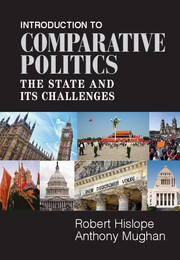3 - How Governments Work
Published online by Cambridge University Press: 05 June 2012
Summary
This chapter shifts our attention away from states and toward how governments work. How do the three main branches of government – the executive, the legislature, and the judiciary – interact in the daily task of governing in democratic and authoritarian regimes? What is the business of governing like across these regime types? We argue that there are important similarities and differences between them when it comes to governing. For example, governments of both types face a similar set of constraints, such as the need to maintain popular legitimacy and to engage in inter-branch negotiation and adjustments when making policy. Equally, executives dominate the governance process no matter the regime type. Thus, even in democracies, executives possess more levers of power than do legislatures. Still, the spread of democracy around the globe has led authoritarian regimes to establish legislatures and courts that, among other things, function to constrain (however mildly) the exercise of arbitrary power. Such similarities notwithstanding, however, there remains considerable variation in both types of regime in regard to how the three branches of government interact.
In this chapter, we explore these issues by addressing the following themes: (1) the rules of governance (such as constitutions, both written and unwritten); (2) the structures of governance (executive, legislative, judicial) in democratic regimes; and (3) the structures of governance in authoritarian regimes. We begin with a discussion of the concept of government.
- Type
- Chapter
- Information
- Introduction to Comparative PoliticsThe State and its Challenges, pp. 62 - 93Publisher: Cambridge University PressPrint publication year: 2012

